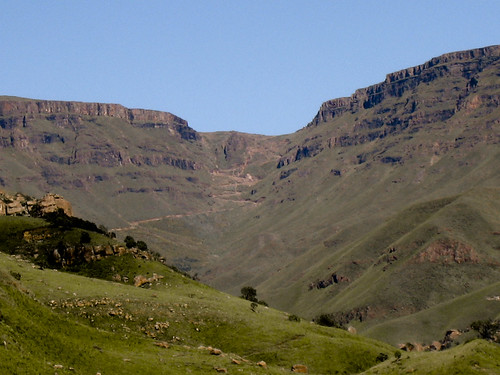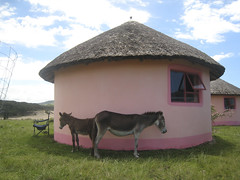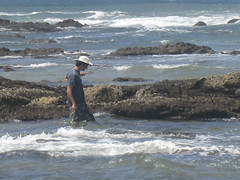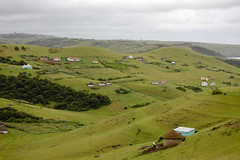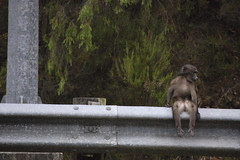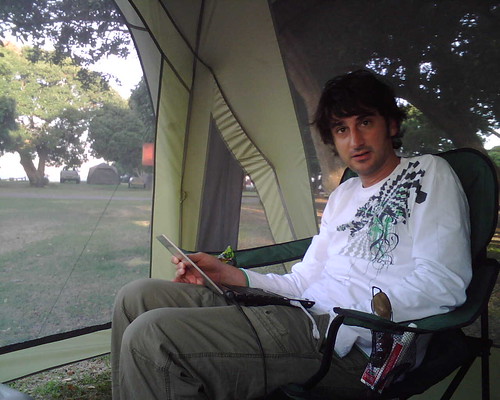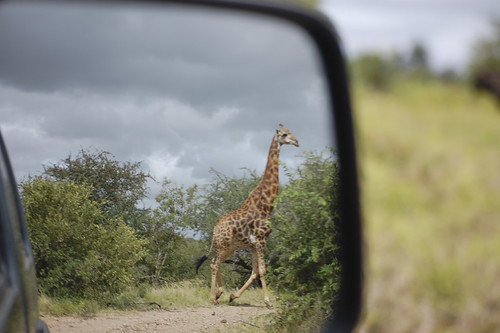
Four days at Kruger, and we still hadn’t seen the big 5. We’d taken many self-drives (where you can drive yourself around the park) including a 4×4 trail– in total covering about 500km traveling about 40km/hr (the speed limit in the park), which is over 12 hours of driving and we never even saw the entire northern half of the park. In addition, we went on a few evening tours, which was about another 5 hours of searching for the big 5.
Three of the big 5 are fairly easy to spot– elephant, buffalo, rhino. Number 4, the lion isn’t easy to spot, but in the evenings, they seem to hangout on the tar road. I guess it retains some of the heat from the day, and the cats like to warm up on it. In addition we saw tons of kudu, impala, steenbok, zebra, wildebeast and giraffe. Warthogs, jackals, hyenas, hippos, wild dogs, chacma baboons, crocodiles, water monitors, and vultures and tons of smaller birds. We did not see number 5, the leopard who is shy, and therefore difficult to spot.
The wildlife is amazing. We saw many different things; giraffes “neck” fighting, zebras mating, rhinos yawning, wildebeest marking their territory, baboons grooming each other, hyenas eating feces, a baby zebra nursing, a lion calling out to his mate, the remains of a kill (bones were picked clean, only a small strip of the zebra hide remained), elephants playing in the water, lions hiding out in the shade. And we learned random facts; the white rhino has poor eyesight, elephants are overpopulated in the park, giraffe sex between males is common, the impala is “fast food” for the lions, female buffalo prefer the young bulls and kick out the old male buffalo, the wildebeest is not a smart animal, giraffes only sleep 20 minutes per day.
After a great time at Kruger, we were ready to head into Mozambique when we discovered we had a leak in our fuel tank. Fortunately we discovered this in South Africa and not after crossing the border. We ended up staying 2 more nights at the border of town of Koomatiport at a nice lodge over looking the Crocodile River, where in the evenings you can hear the hippos calling out to each other.

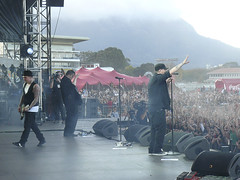

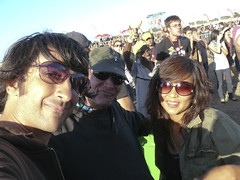

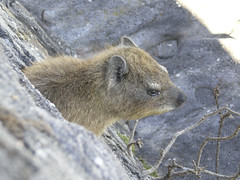
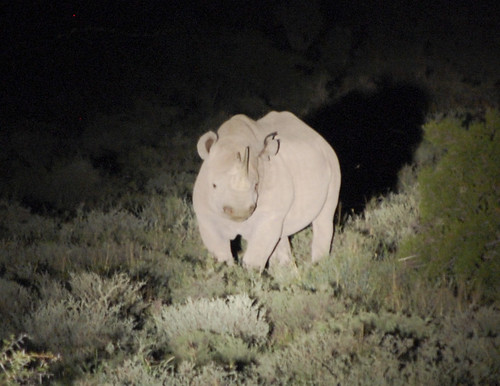
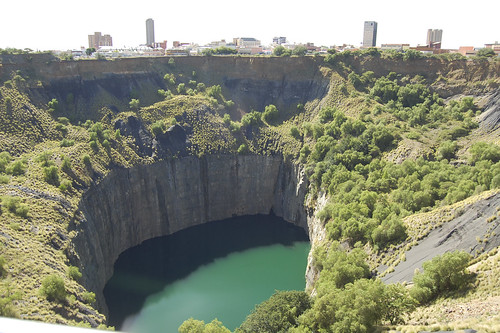
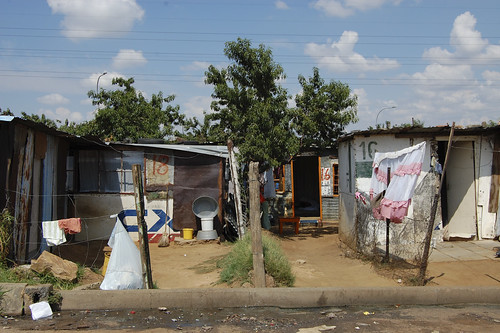

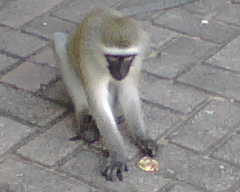

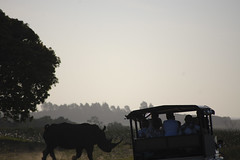

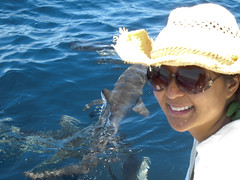
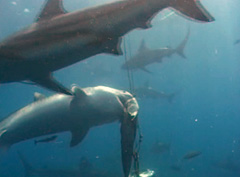 Mayhem is the best way to describe the scene under water. There’s sharks everywhere around you, above you, below you. When they swim at you, it’s quite startling. Especially the tigers. They almost always turn before they get to you, or if they get too close, they tell you to simply push them away. That’s right, with your own hands. Luckily there was no need for either of us to do that. We let the guys with the giant under water cameras in front of them handle it
Mayhem is the best way to describe the scene under water. There’s sharks everywhere around you, above you, below you. When they swim at you, it’s quite startling. Especially the tigers. They almost always turn before they get to you, or if they get too close, they tell you to simply push them away. That’s right, with your own hands. Luckily there was no need for either of us to do that. We let the guys with the giant under water cameras in front of them handle it 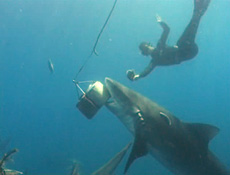 The sharks are obviously mostly interested in the bait buffet which gets refilled by a brave guy who free dives 10 meters down with just a mask and fins. And if that wasn’t enough, they are also tossing in sardines from the boat above you just to keep things hopping.
The sharks are obviously mostly interested in the bait buffet which gets refilled by a brave guy who free dives 10 meters down with just a mask and fins. And if that wasn’t enough, they are also tossing in sardines from the boat above you just to keep things hopping.